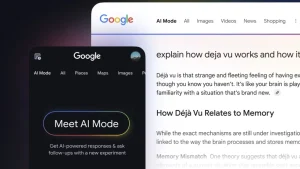Importing photos and videos from an iPhone to Windows 10 PC is usually quite a simple task. However, some users report a peculiar problem whenever they connect the iPhone to the PC. It seems that the Apple DCIM folder appears empty on PC, although users definitely have some photos and images ready for importing.
If that’s what’s bothering you, as well, check the steps we provided below.
In this article:
ToggleWhy my iPhone’s internal storage is not showing on the PC?
There are a few possible reasons why this might occur. The first thing that comes to mind is drivers closely followed by missed Trust prompt. Try inspecting the driver and, if the standard Windows Import feature fails to access iPhone’s local storage, use iTunes.
1. Restart your iPhone and your PC
The first thing to do is to restart your iPhone and your PC. This might be a minor system halt and a simple restart is usually all that’s needed to fix it.
However, if the problem continues and the Apple DCIM folder appears empty, reinstalling the driver is a good next step to continue troubleshooting.
2. Check drivers
Due to the plug-and-play feature of Windows 10, issues like this are quite rare. Basically, Windows 10 will install a generic driver as soon as you connect your iPhone to it via a USB data cable. And, more times than not, this driver will suffice to import and export media files from your iPhone to the PC and vice versa.
On the other hand, maybe the driver is not installed properly or you missed the prompt on your iPhone that grants Windows 10 PC access to iPhone’s storage. Also, switching between USB ports is a good idea. Plug out the data cable and plug it in in a different USB-A port on your PC.
Here’s what you need to do:
- Connect your iPhone and tap Trust when prompted.
- On your PC, right-click on Start and open Device Manager.
- Look for Apple iPhone under Portable devices. If you don’t see it, select View from the Tools bar, and then check the Show hidden devices option.

- If you don’t see the iPhone or the Apple iPhone icon is transparent, right-click on Apple iPhone and choose Update driver.
The safest way to get the latest and best driver for your iPhone on Windows 10 is to install the iTunes client.
3. Uninstall iPhone from the Device Manager
Now, if the updating did nothing, you can uninstall the device and install it again. Again, the generic driver usually works without issues but that’s not a rule of thumb. So, before falling to iTunes and using the client to import/export photos and videos, try reinstalling the driver on your PC.
Here’s how to reinstall the iPhone driver on your Windows 10 PC:
- Open Device Manager while the iPhone is not connected, and expand Portable Devices.
- Right-click on Apple iPhone and select Uninstall device.
- Restart your PC and then connect your iPhone via a USB cable.
- Wait for it to install the driver and check if the iPhone is still not showing up in iTunes on Windows 10.
If you are still experiencing issues and the Apple DCIM folder appears empty on your PC when you import photos or videos, try using the iTunes client.
4. Use the latest version of iTunes
It goes without saying that Apple’s hardware works the best when operating in its software ecosystem environment. And the way to utilize their software on Windows 10 is by using the iTunes client. Like it or not, that’s probably the preferable way to back up and restore your iPhone and interchangeably share data between two devices.
So, download the latest version of iTunes for Windows. Make sure to get the 64-bit version if your Windows 10 runs on the 64-bit architecture. Once you download and install the client, sign in with your Apple ID and connect your iPhone with a USB data cable.
There you can easily manage your Gallery and do many more things without needing to rely on the built-in Windows Import tool.
Just make sure to sign in with the same Apple ID you use on your iPhone and click Account > Authorizations > Authorize This Computer.
5. Update iOS and Windows
Finally, we can only recommend restoring your device to factory settings. It seems that something is preventing access to your local storage and erasing everything and starting from scratch seems like the last solution you can rely on.
After you back up everything, either connect your iPhone to your PC and, in iTunes, click Device > Restore iPhone or, on your iPhone, navigate to Settings > General > Transfer or Reset iPhone > Erase All Content and Settings.
However, before doing so, try updating the firmware on your iPhone and, also, updating Windows 10. Although new updates usually come automatically on both systems, checking for updates manually occasionally is a good idea.
Here’s how to manually update your iPhone:
- Open Settings.
- Select General.
- Tap Software Update.
- Check for updates by swiping down.

- If any update is available, download and install it as soon as possible.
And here’s how to check for updates on your Windows 10 PC:
- Press the Windows key + I letter key to open Settings.
- Click on Windows update.
- Check for updates and install them.
And, on that note, we can conclude this article. You can also report the problem to Apple in case the issue persists even after you restore your iPhone. You can contact Apple Support. Thank you for reading and feel free to share your thoughts, questions, or suggestions with us in the comments section below.




